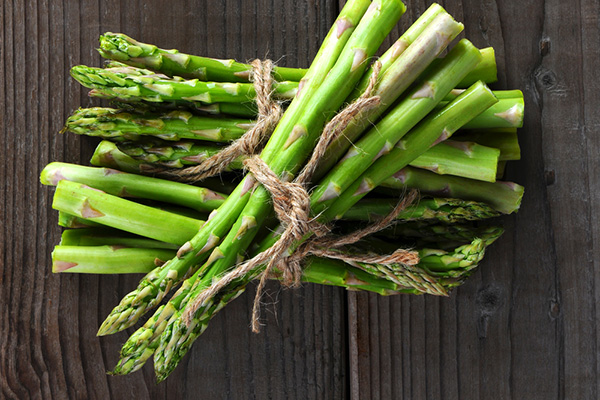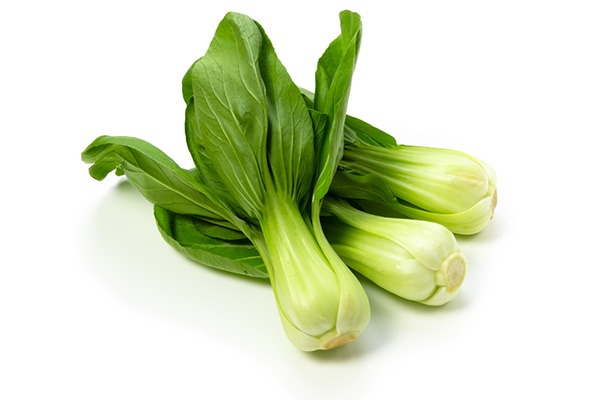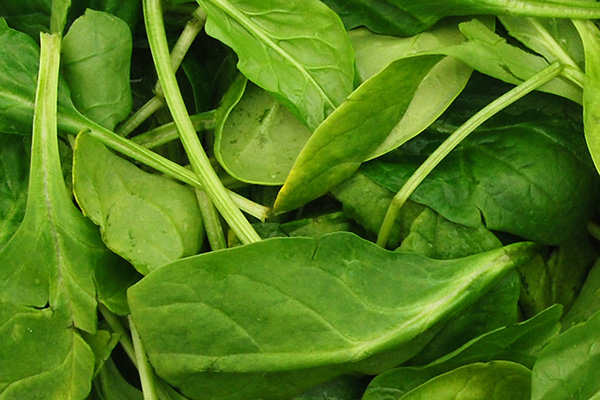10 Emerald Greens to Eat Now
 Emerald stones photo via Shutterstock
Emerald stones photo via Shutterstock
Pantone’s color of the year for 2013 is emerald. The rich hue can be seen in nature, fashion, food, and of course stunning jewelry. Elizabeth Taylor’s famous Bulgari emerald and diamond necklace fetched $6 million at auction in 2011, and Angelina Jolie is designing emerald jewelry, with proceeds going to charity. But the color has sparked an emerald green diet trend. Eating deep-colored greens has always been a staple of a healthy diet. Here’s 10 green foods to try now:
 Kale photo via Shutterstock
Kale photo via Shutterstock
Kale
Kale is so popular these days it even has its own t-shirt (a Vermont company, of course), and it’s even mocked in new TV commercials. But kale has been around for at least 2,000 years. The leafy green is high in vitamins A, C, and K, and has a host of phytonutrients (plant compounds) including lutein which is known to play a role in eye health.
 Cilantro photo via Shutterstock
Cilantro photo via Shutterstock
Cilantro
Some people love cilantro and some hate it. Studies show your preference might be genetic. For those who love it, it’s the perfect way to add abundant amounts of flavor at minimal calorie cost. You would have to eat a lot to reap a significant nutrient benefit, but as a sodium-free way to boost the flavor in a variety of dishes, it’s a win-win.

Swiss Chard photo via Shutterstock
Swiss Chard
Swiss chard, despite the name, is popular in Mediterranean cuisines and like kale, is high in vitamins A, C, and K. It’s in the same family as beets and spinach and is a source of beta-carotene and lutein, two phytonutrients known to help maintain eye health. Swiss chard is also high in potassium. Just one cooked cup contains almost 30 percent of the amount of your daily potassium needs.
 Asparagus photo via Shutterstock
Asparagus photo via Shutterstock
Asparagus
Did you know, asparagus can grow up to 10 inches in 24 hours? This green vegetable is high in folate, a member of the B-vitamin family that protects against neural tube defects during pregnancy, and is high in vitamins A, C, E and K. According to a 2009 study, asparagus is thought to help with hangovers due to its ability to protect the liver from the toxins associated with drinking too much alcohol.
 Edamame photo via Shutterstock
Edamame photo via Shutterstock
Edamame
Edamame is another name for boiled, immature soybeans in the pod. They are high in protein (11 grams in 1/2 a cup of shelled beans) and are high in fiber (9 grams per 1/2 a cup shelled beans). Typically served as an accompaniment to Japanese cuisine, the beans can also make for a tasty addition to salads, pasta dishes, and even hummus.
 Bok Choy photo via Shutterstock
Bok Choy photo via Shutterstock
Bok Choy
Bok choy, also known as Chinese cabbage, has been cultivated in China for more than 5,000 years. It’s high in vitamins C and K and one cup provides more than 100 percent of the recommended daily amount of vitamin A. It’s also a source of calcium and iron. Bok Choy has a mild flavor and is often used in stir-fries and soups.
 Spinach photo via Shutterstock
Spinach photo via Shutterstock
Spinach
Spinach, like kale, is a nutritional powerhouse. It’s high in vitamins A and K and is a great source of calcium. Spinach is also high in the phytonutrient lutein. Popeye made this vegetable popular and the cartoon has even had a positive effect on how much children will eat of the leafy green.
 Collard photo via Shutterstock
Collard photo via Shutterstock
Collard greens
Often associated with Southern cuisine, this leafy vegetable has been cultivated for more than 2,000 years. When flavored with ham or bacon the green becomes unhealthy, but when prepared without added fat and sodium, this vegetable really delivers nutritionally. One cooked cup has only 49 calories and takes care of your daily vitamin A needs. Collard greens are also an excellent source of vitamins C and K, and are high in calcium. A Southern tradition is to eat collard greens on New Year’s Day to ensure wealth in the coming year.
 Brussels Sprouts photo via Shutterstock
Brussels Sprouts photo via Shutterstock
Brussels Sprouts
These cruciferous little guys often get a bad rap for their strong odor and (perceived) bad taste. Yes, if overcooked, Brussels sprouts do taste pretty terrible, but when roasted and crispy, they are quite delicious and really trendy right now. A half cup of cooked Brussels sprouts has more than 80 percent of your daily vitamin C needs. And Brussels sprouts are a source of sulforaphane (also in kale, bok choy, and arugula), a compound thought to have anti-cancer properties.
 Arugula photo via Shutterstock
Arugula photo via Shutterstock
Arugula
Also called Rocket, this leafy green is actually an herb. It’s peppery, spicy flavor adds a kick to salads, pastas, and pizza. It’s very low in calories (1 cup has 5 calories) and is a source of folate and vitamin C.
What’s your favorite healthy green food?


